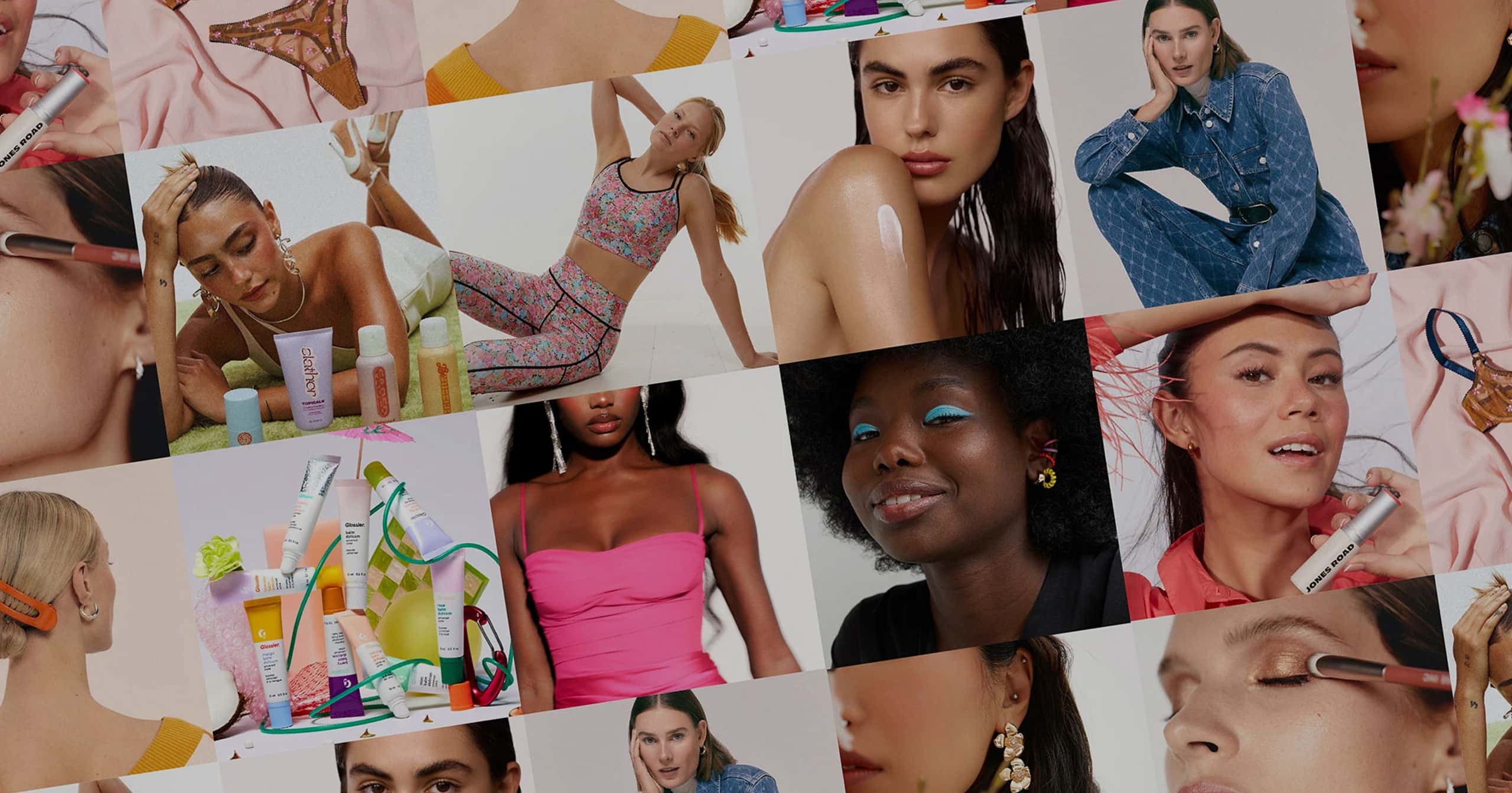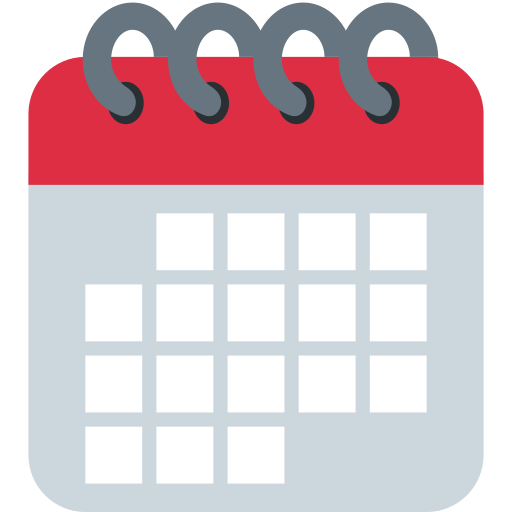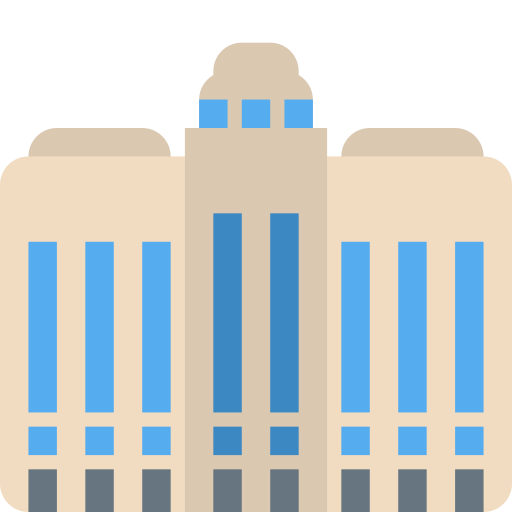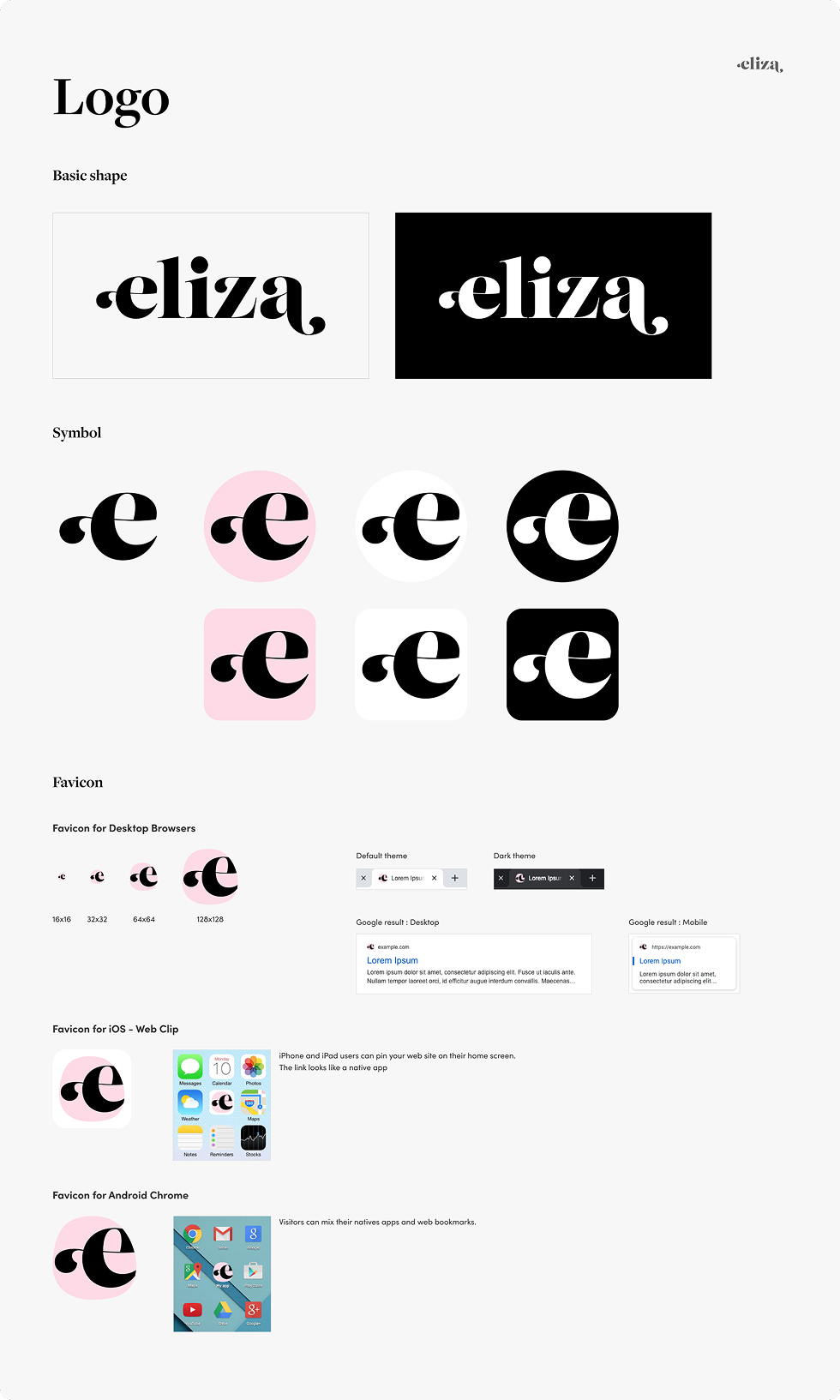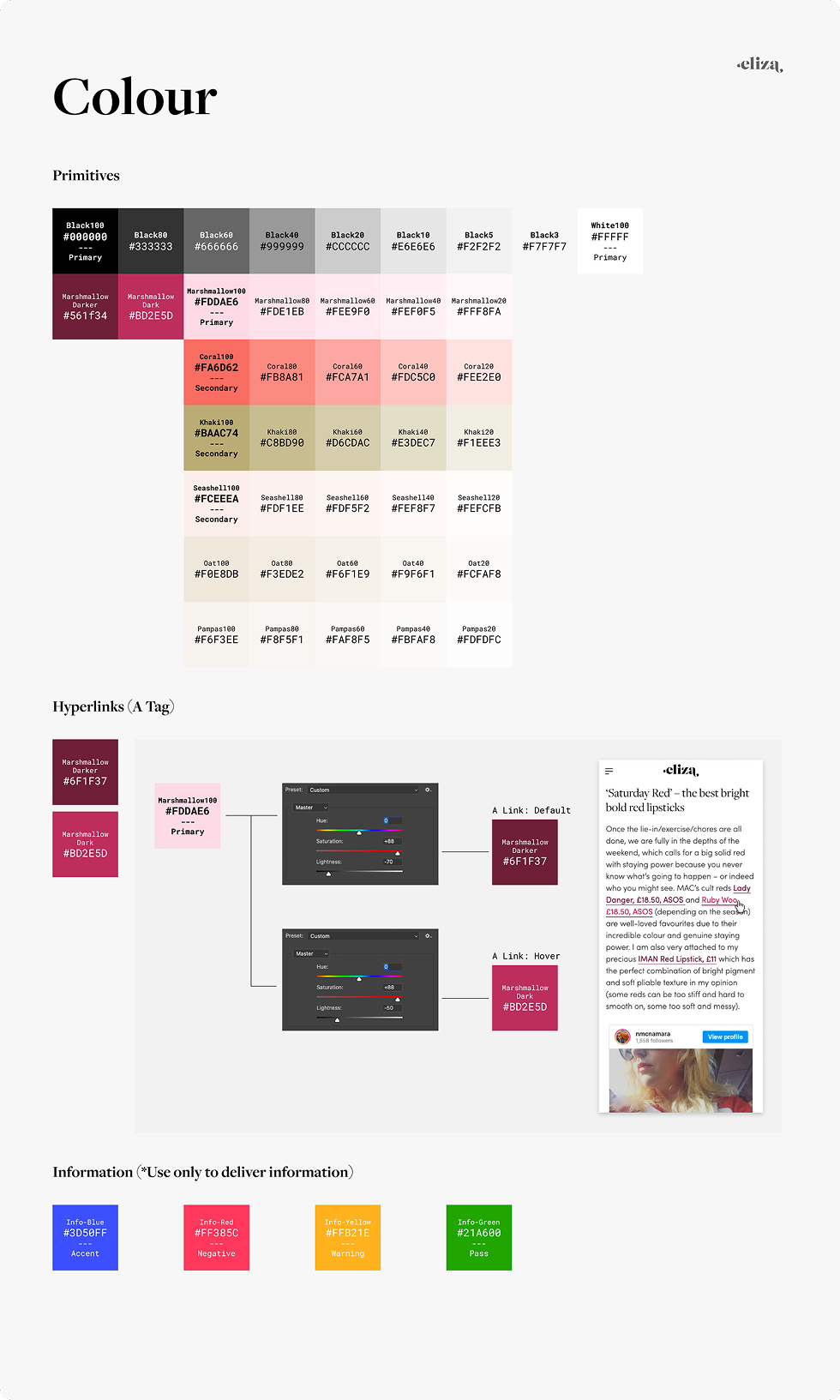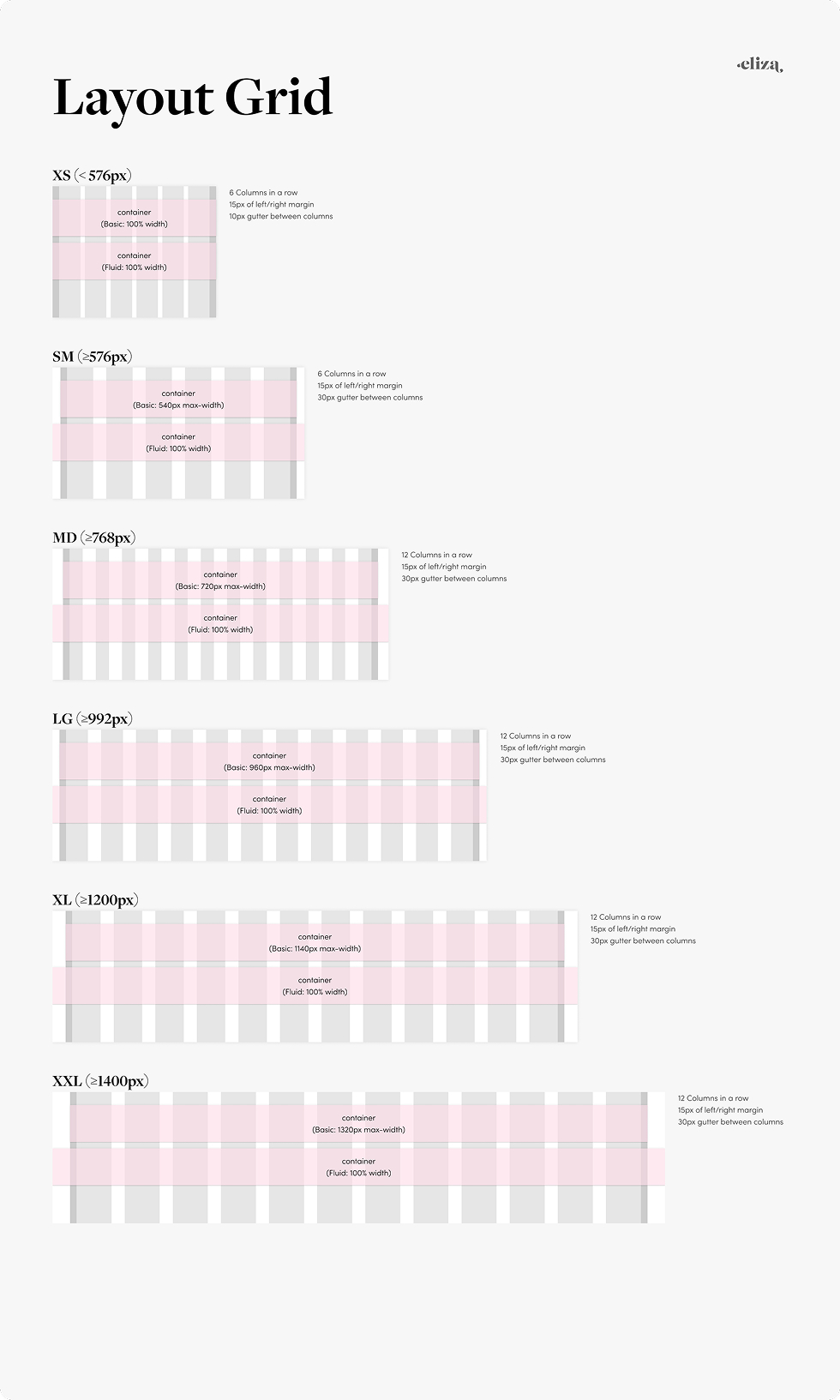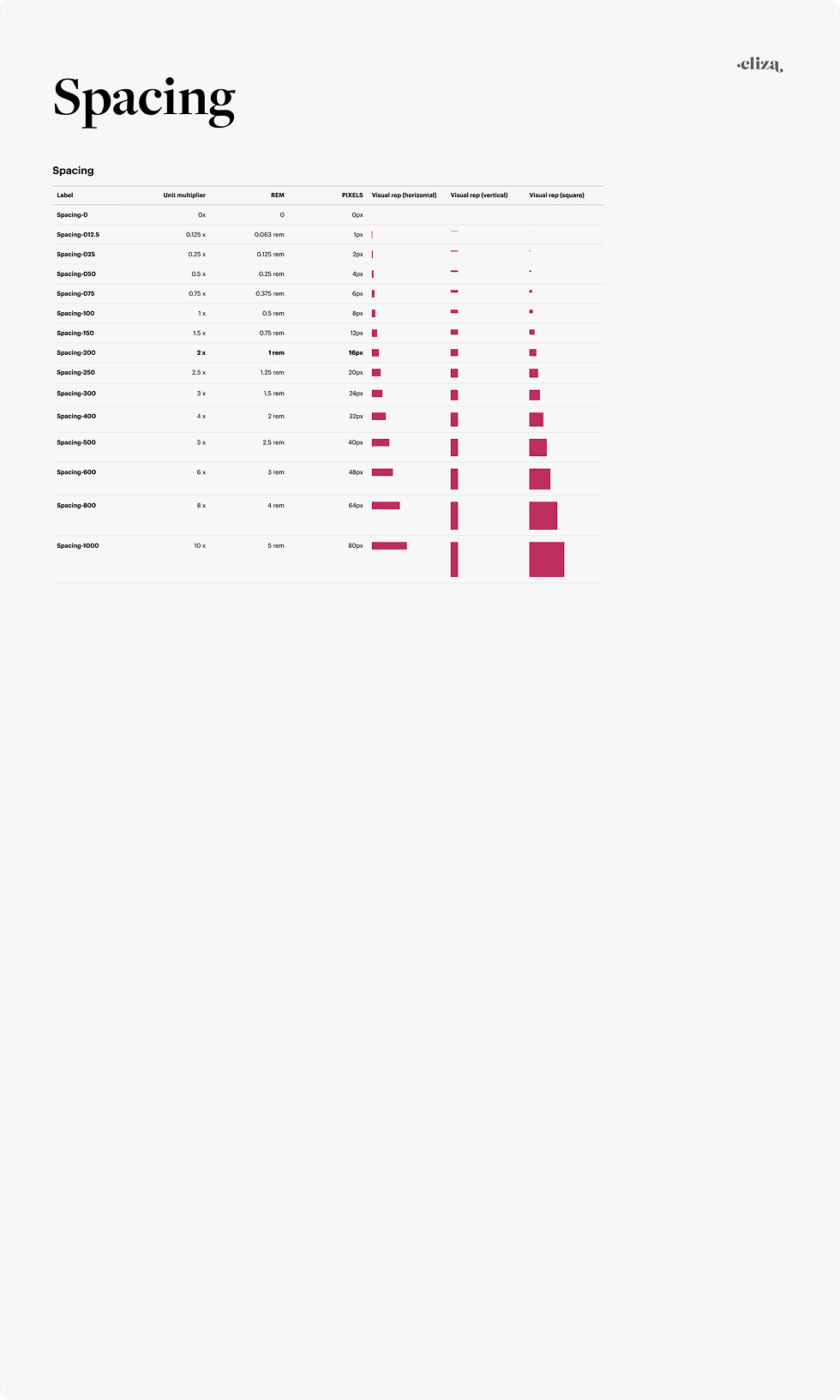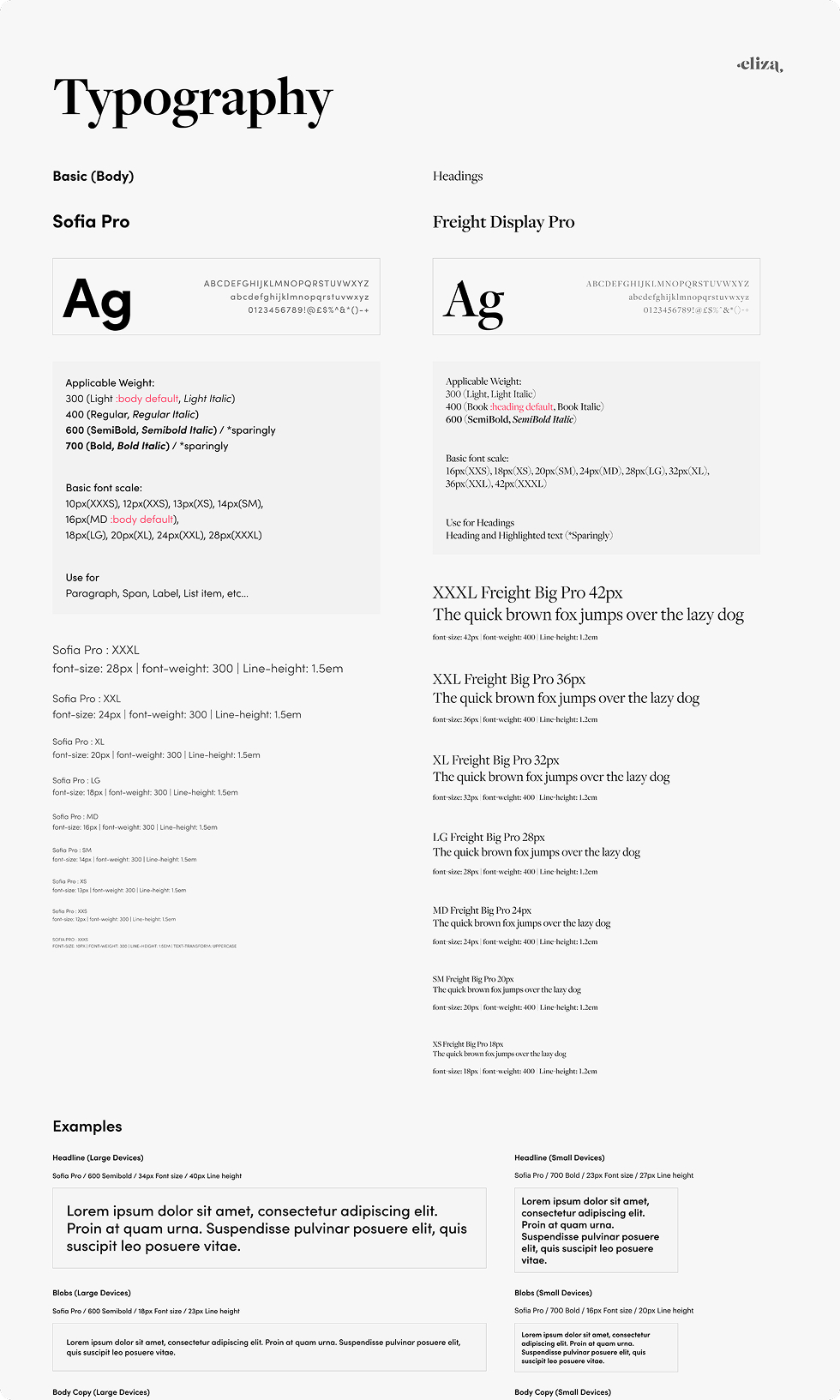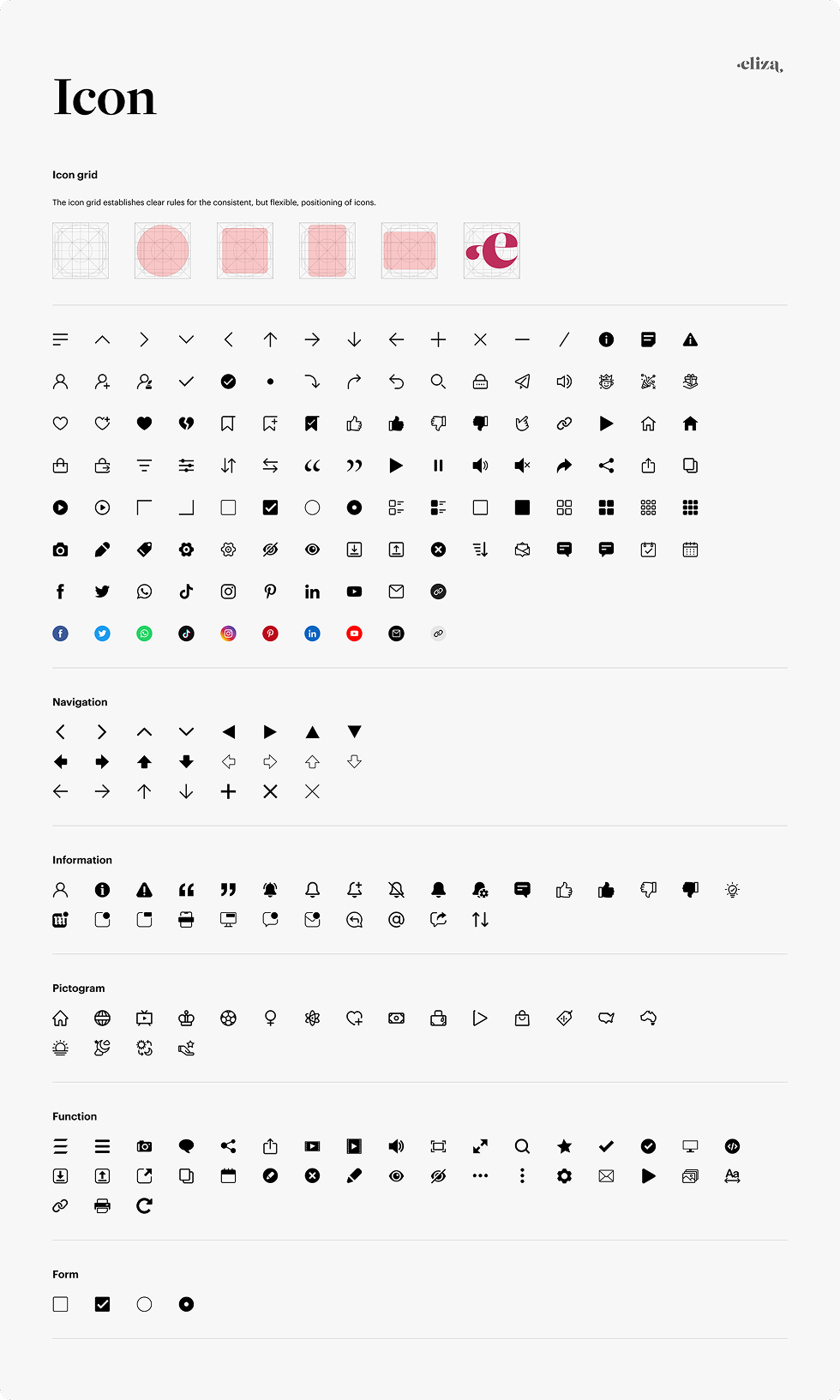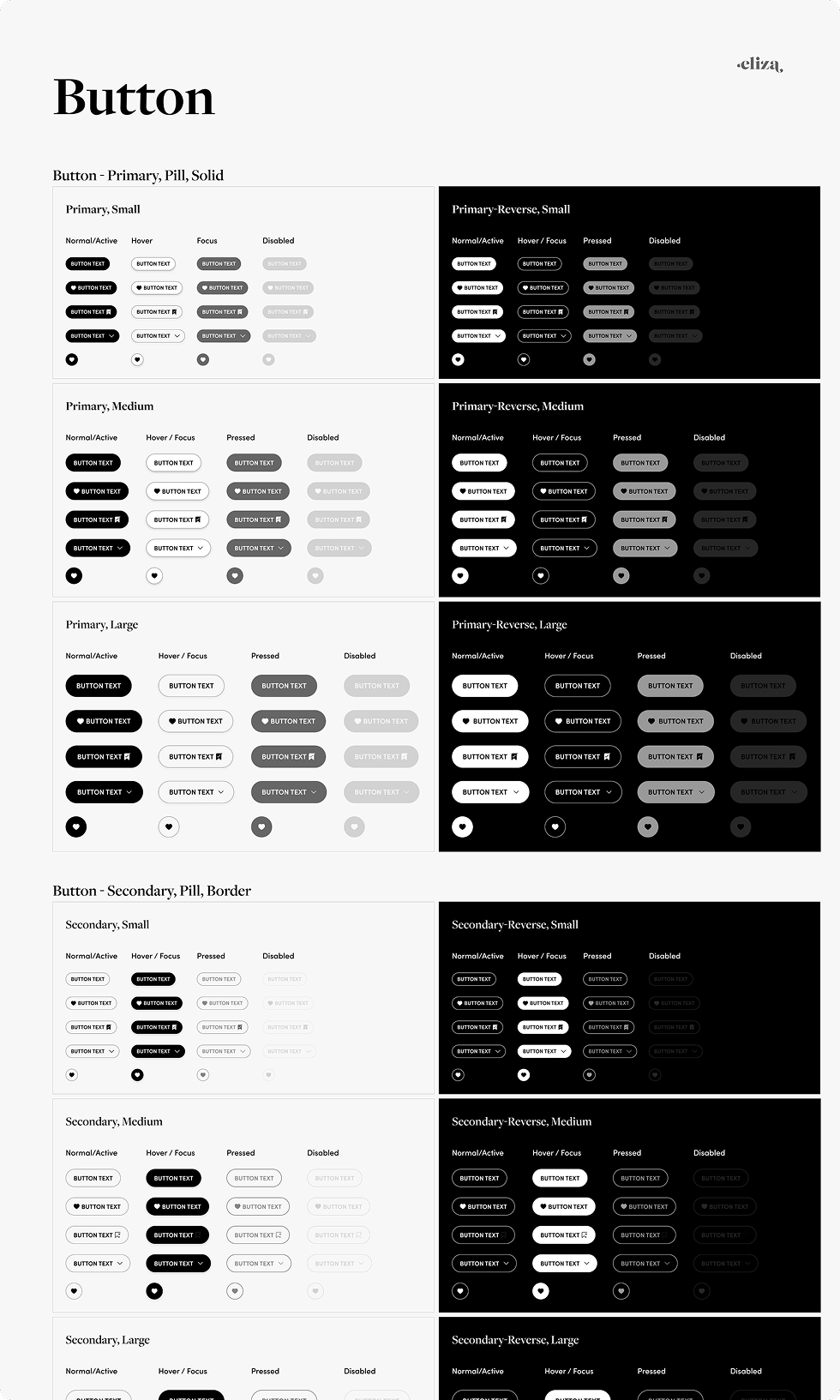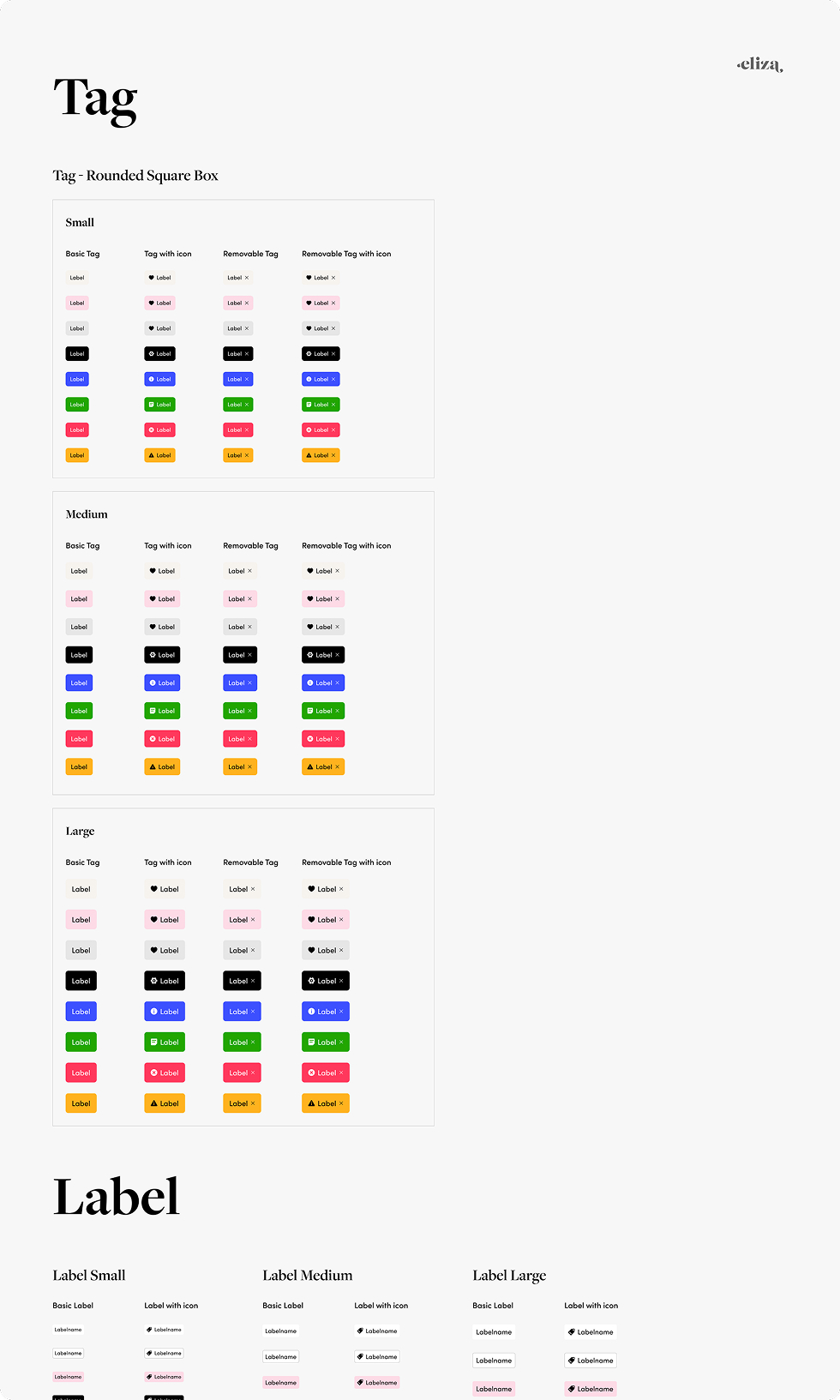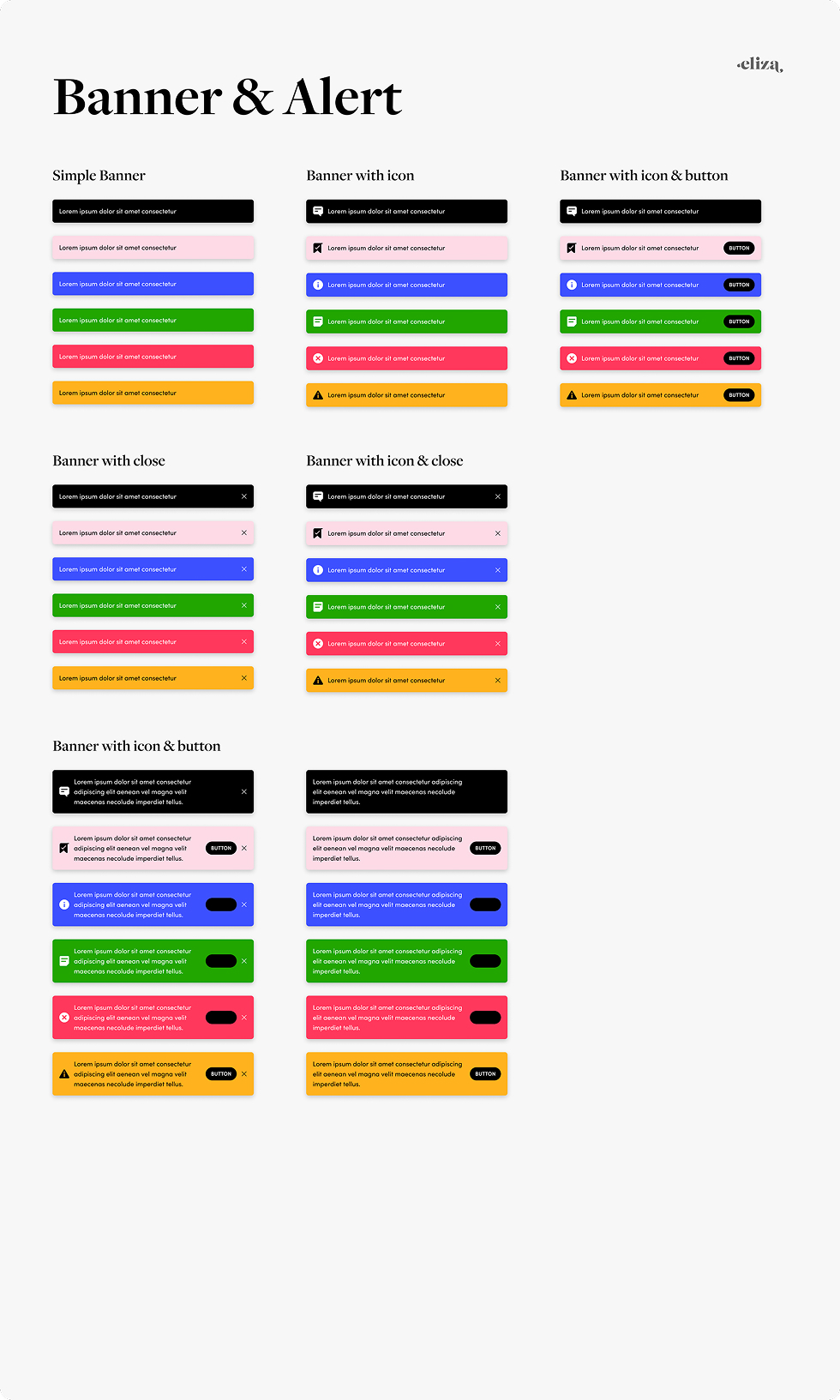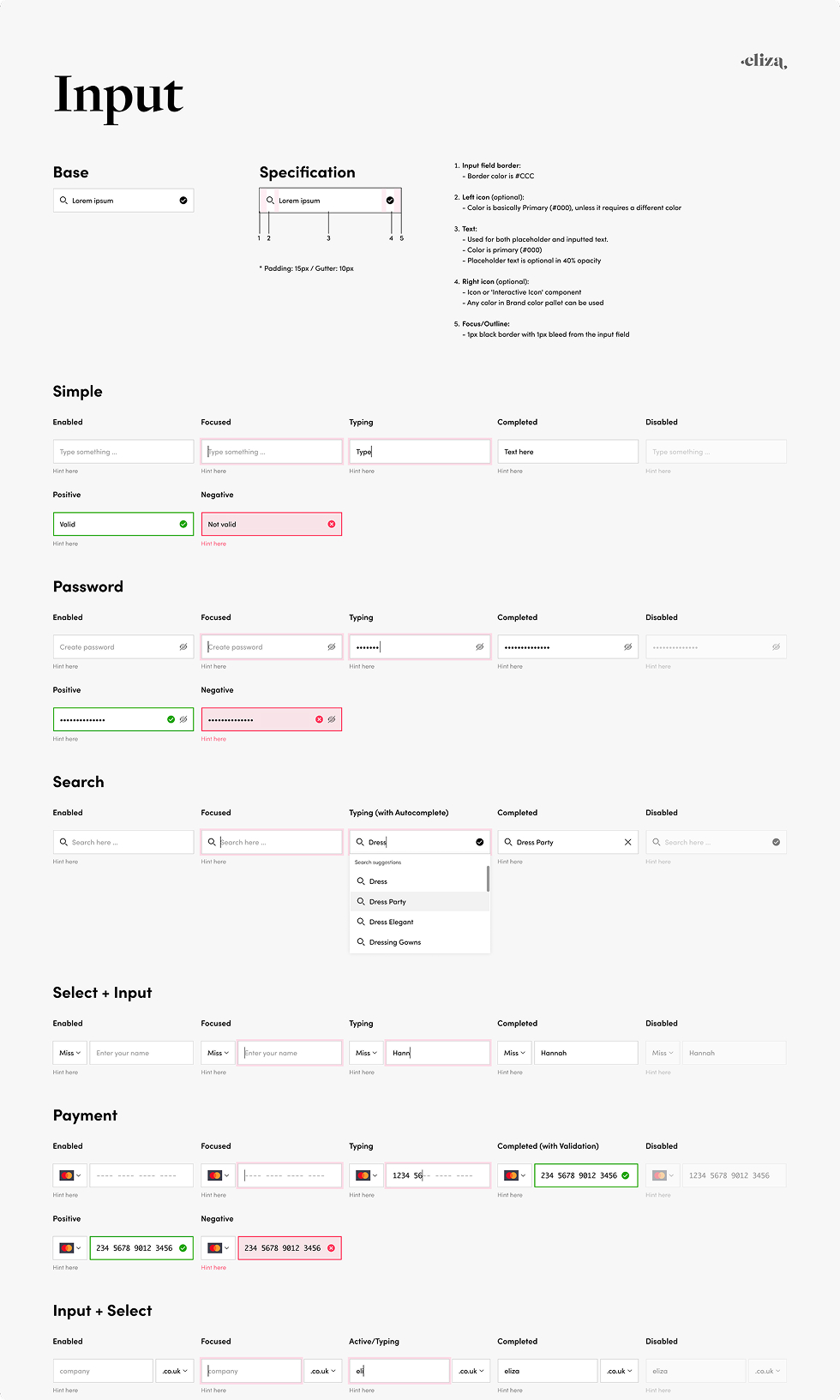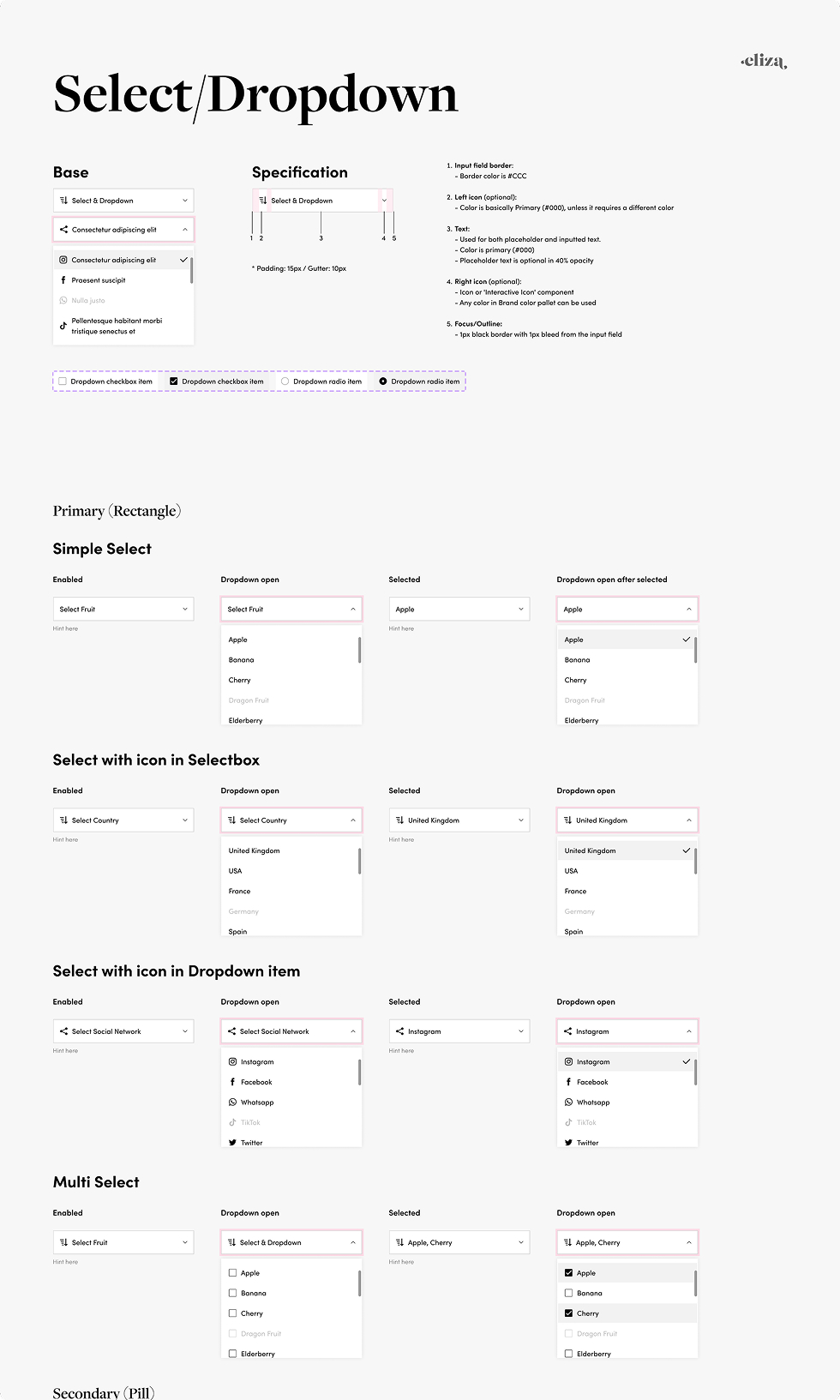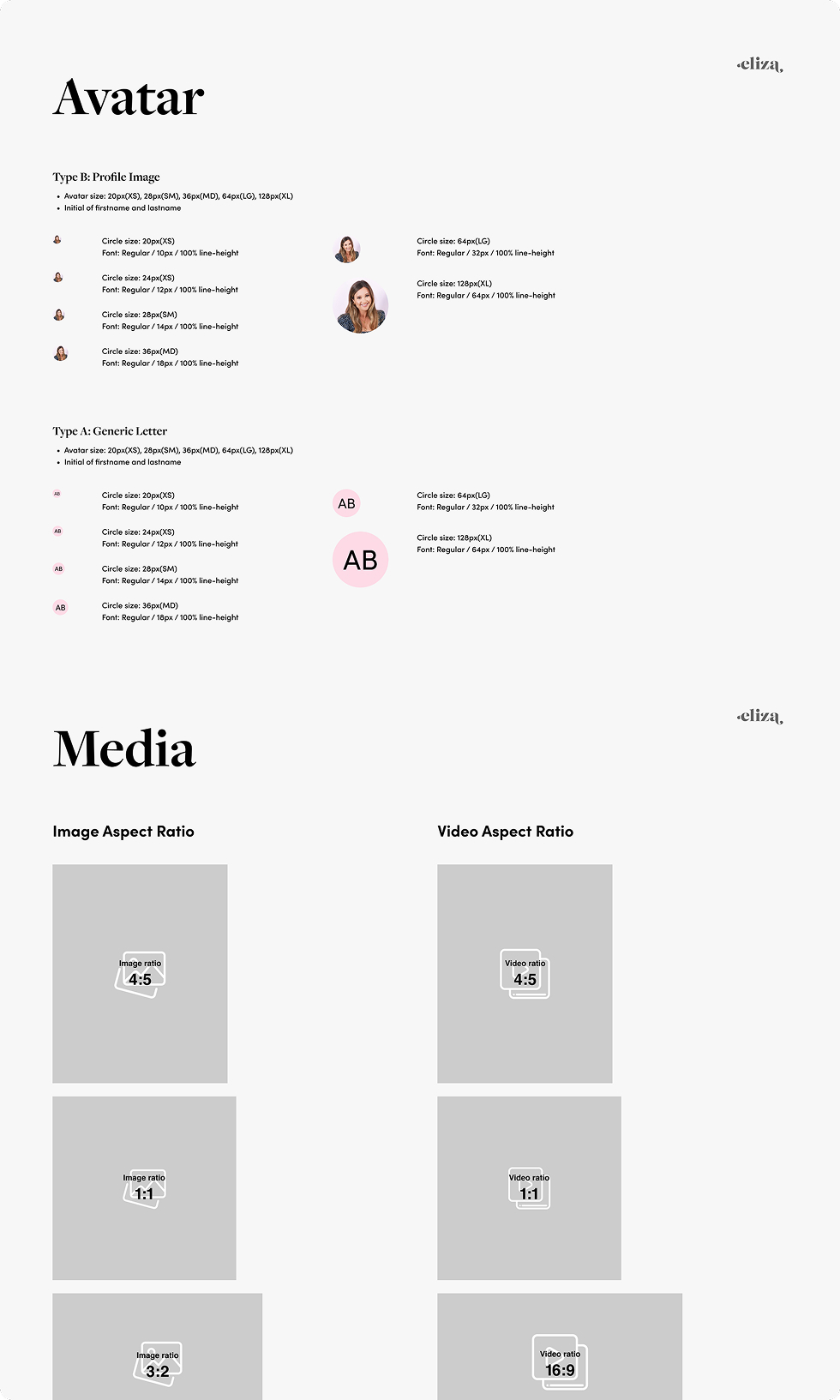
Eliza helps millennial women shop smarter.
Overview
Eliza is a new digital fashion and beauty destination designed to help millennial women shop smarter. The platform blends engaging editorial with honest style advice, while empowering users to personalise their shopping journey. Shopping smarter means: not breaking the bank, not destroying the planet, not spending hours scrolling, and not feeling excluded or guilty.
I joined Eliza as Lead Product Designer at DMG Media, where I was responsible for shaping the product vision into tangible user experiences. As this was a greenfield pilot project, I had the unique opportunity to set the overall design direction, scale the product vision, and establish a design system that laid the foundation for Eliza’s brand and product identity.
What I Contributed
- Design Leadership: Set the overall product design direction and established principles aligned with Eliza’s editorial and commercial goals.
- Design System Development: Built a scalable UI kit and component library to maintain consistency across product and content touchpoints.
- End-to-End Product Design: Delivered user journeys, personas, wireframes, prototypes, and high-fidelity UI across mobile-first experiences.
- Collaboration: Partnered with editors, developers, and product managers to translate brand values into interactive, user-friendly features.
- User Validation: Conducted usability testing, surveys, and interviews to validate assumptions and refine the MVP.
 My role
My role
 Project period
Project period
 Client
Client
The Challenge
Since the pandemic, online shopping has surged, but it has also become overwhelming and fragmented. Millennial women in particular lack the time to navigate endless choices and often struggle to find trustworthy advice, sustainable options, or the best price.
This created a clear opportunity for a mass-market fashion and beauty platform that could cut through the noise, offer curation, and provide genuine, values-driven recommendations.
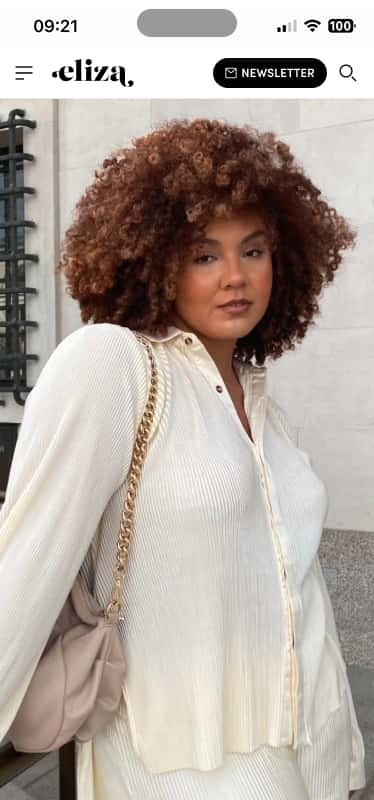
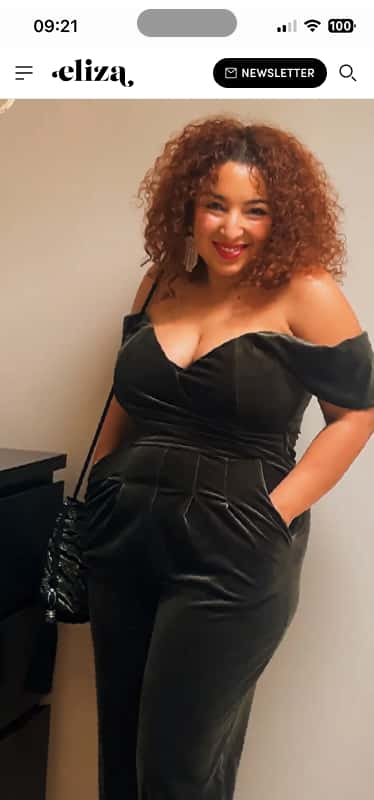
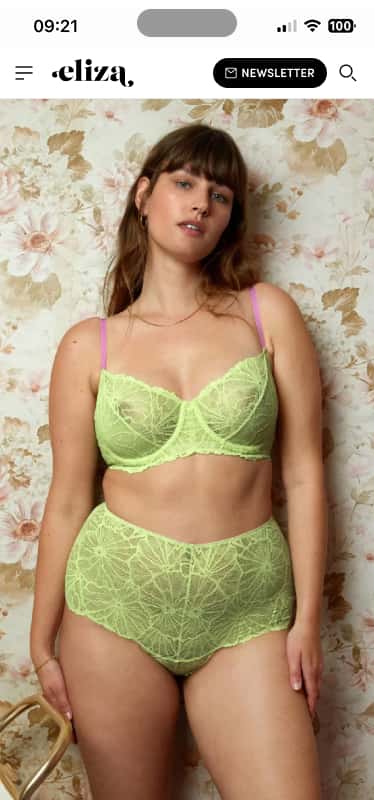
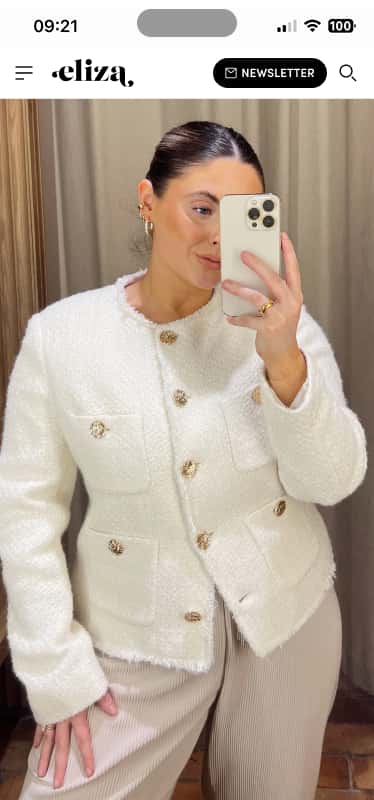
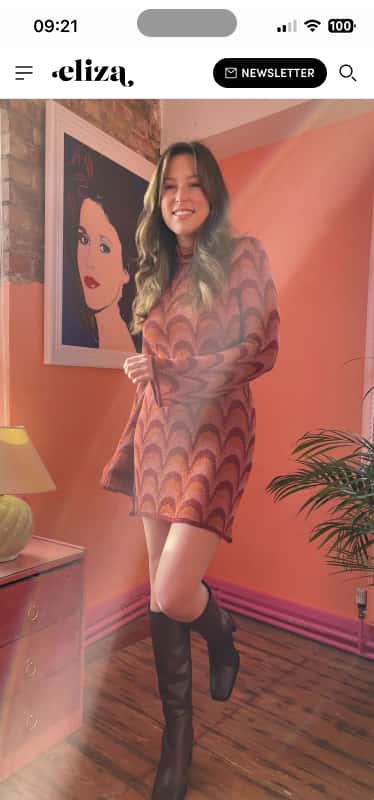
✳ Millennial Women, Eliza's target consumers. Why?
From talking to millennial women during our customer research phase we came across an opportunity in the digital fashion and beauty space. 70% of all online fashion purchases made in the UK over the last year were made by millennials. (*National Statistics 2021)
Competitive analysis
To understand how Eliza could differentiate, I analysed leading players in the digital fashion media space. Our hypothesis was that Gen Z and Millennials would most likely access content via mobile, so we were particularly interested in what services and experiences competitors were offering in their mobile environments. This guided our analysis to focus not just on content variety, but also on usability, navigation, and interaction patterns within mobile contexts.
Sheerluxe
Monthly uniques: 700k
Revenue model: Programmatic advertising, affiliate, partnerships
Audience: UK based, upmarket 30+ women with disposable income
- Strengths: Diverse content formats (articles, videos, podcasts, events), strong editorial voice, high-quality visuals.
- Weaknesses: Primarily a magazine-style experience with limited interactive or personalised shopping features; slow loading and inconsistent layouts in some areas.
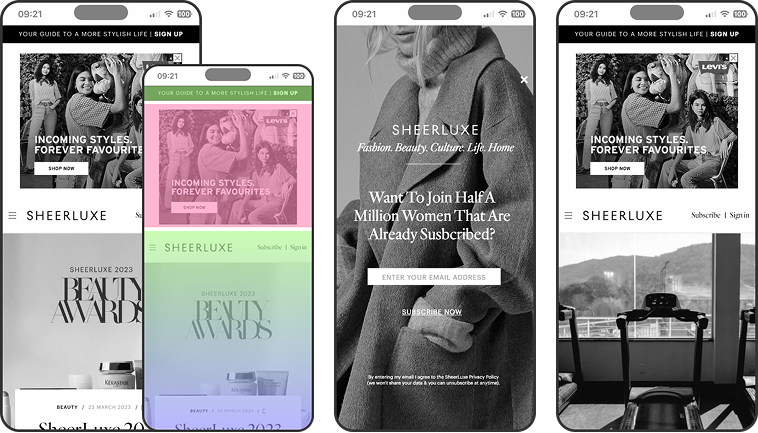
Vogue UK
Monthly uniques: 10.6M (UK), Global: 113.6M
Revenue model: Programmatic advertising, affiliate
Audience: Luxury, high fashion
- Strengths: Premium editorial, clear navigation, accessibility features, globally recognised brand authority.
- Weaknesses: Digital magazine-first approach, with core content often below the fold, limited interactive shopping options, and ad-heavy distractions.
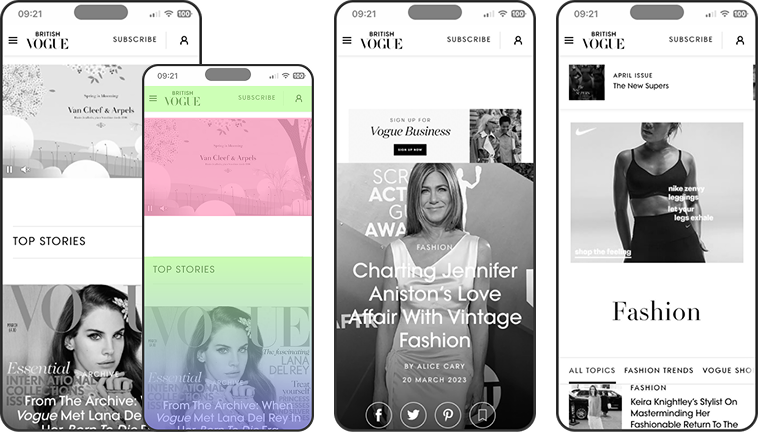
Key Insight
These references highlighted a clear gap: while competitors leaned heavily on editorial content, Eliza’s differentiator was the opportunity to combine strong editorial with interactive and personalised shopping features.
Vision & Solution
Product Vision
- The long-term vision for Eliza was ambitious: to grow from a mobile-first website into an app delivering AI-driven, event-based shopping recommendations (e.g. Valentine’s Day, Christmas, seasonal wardrobes).
- My role in the early phase was to translate this vision into a practical MVP, starting with the website, promotional pages, and social media presence—laying the foundation for future expansion.
The Solution
Eliza positions itself as a trusted digital companion for millennial women—part editorial magazine, part personalised shopping assistant.
- Curated editorial content combined with practical shopping advice.
- Personalised recommendations powered by intelligent data capture.
- A mobile-first platform designed to be inclusive, uplifting, and stylish without being intimidating or elitist.
By focusing on accessibility, sustainability, and trustworthy content, Eliza aimed to establish itself as a go-to destination for smarter shopping.
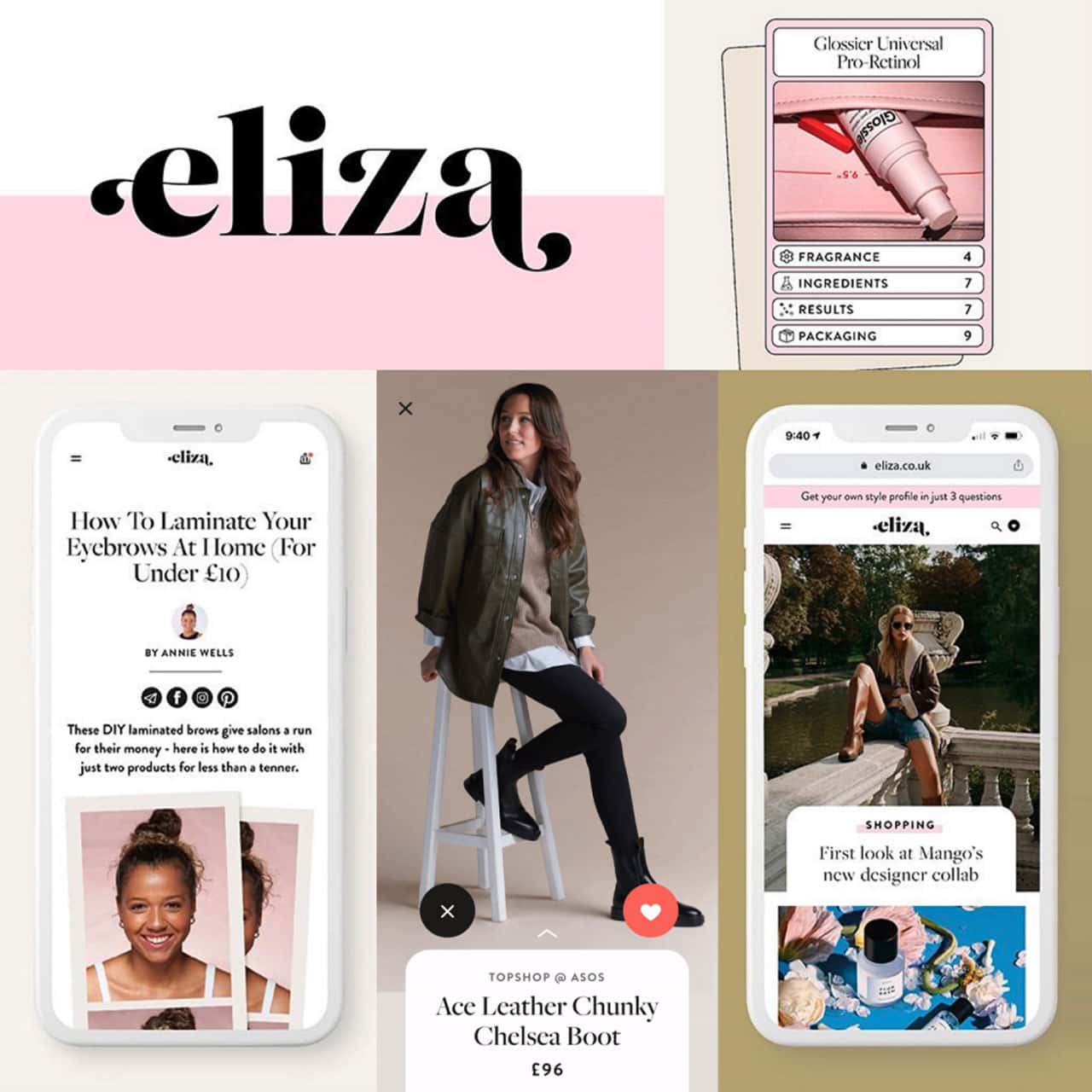
User survey & Personas
To understand Eliza’s target users, I conducted face-to-face customer interviews across a range of ages and shopping habits.

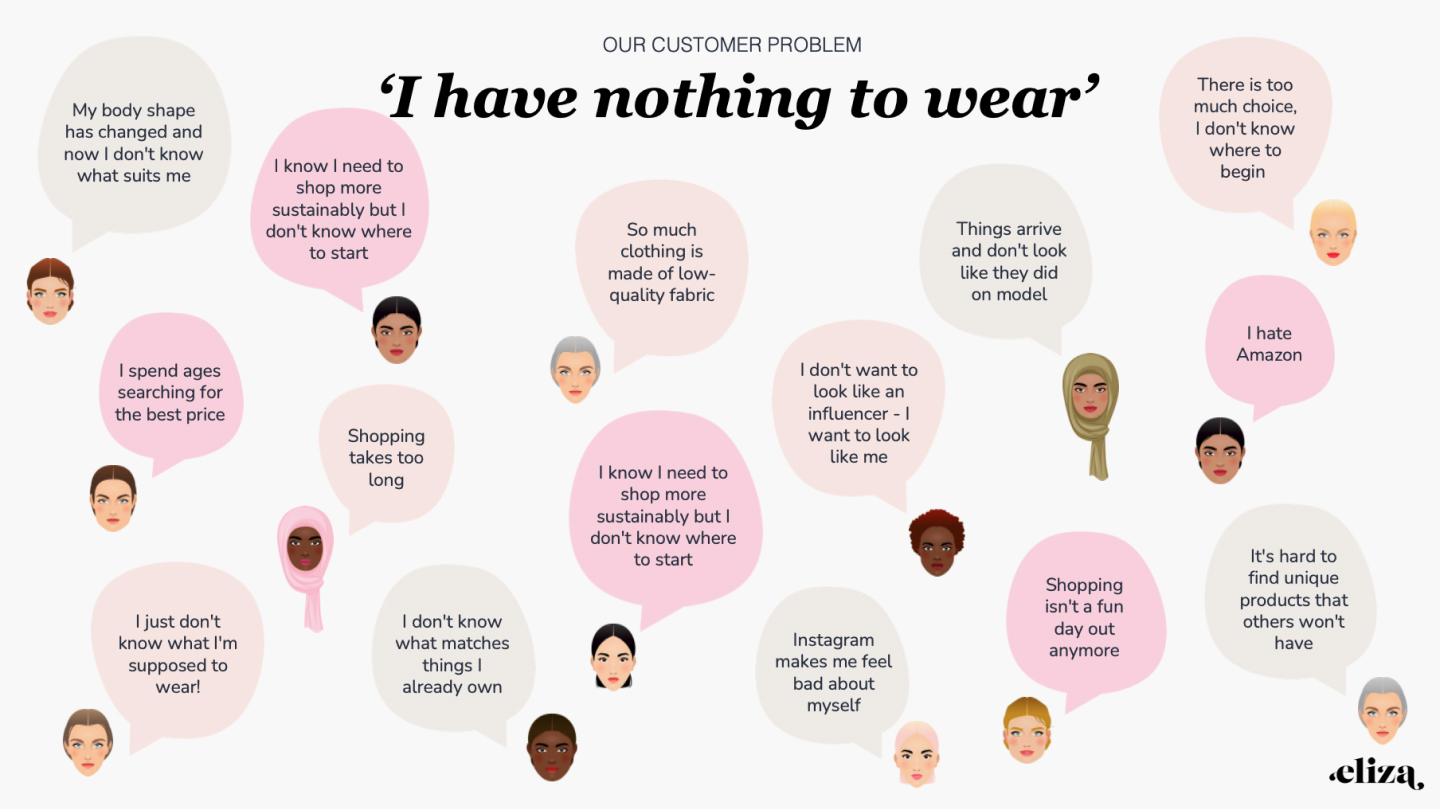
Key insights:
- Millennial women care about everyday fashion as well as special occasion outfits.
- Many users prefer advice from trusted professionals in fashion and beauty.
- Users value inspiration, guidance, and curated content to make smarter shopping decisions.
These findings informed the development of user personas, which helped the team align product decisions with real user needs, behaviours, and preferences.
Persona Development
Based on the survey and interviews, I created personas to guide design decisions:
- Grouped users by shopping goals and habits (quick buyers, inspiration seekers, eco-conscious).
- Kept millennial women as the core audience while reflecting diverse behaviours.
- Focused on recurring needs: trusted advice, affordable style, curated options.
- Used personas as a reference to prioritise MVP features and align the team.
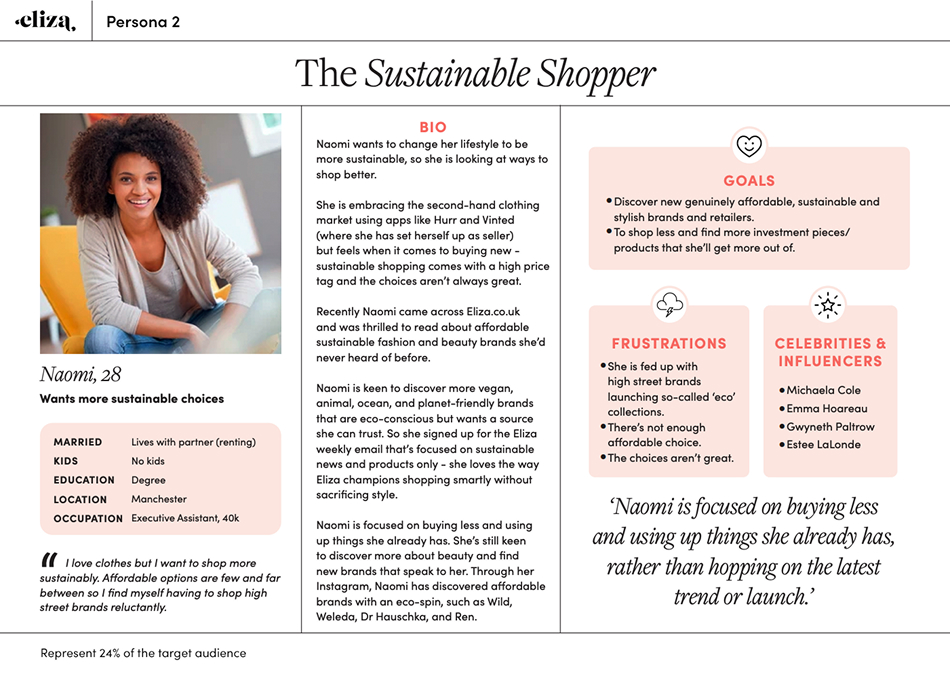
A day in the life of Naomi
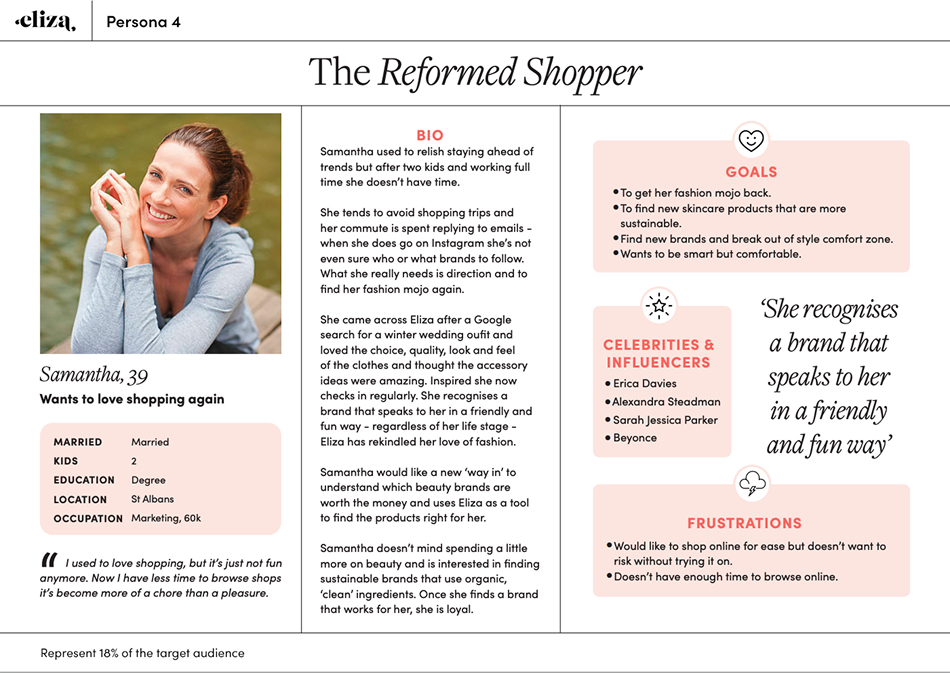
A day in the life of Samantha
Customer Journey
Based on research insights, I facilitated a team workshop using card sorting and collaborative exercises to map the full customer journey.
Key steps:
- Defined user goals and touchpoints along the shopping journey.
- Generated hypotheses about user behaviours and crafted user stories.
- Outlined a full feature flow, including fashion/beauty articles, gift guides, the Eliza Community, and AI-powered features (fashion and beauty suggestions).
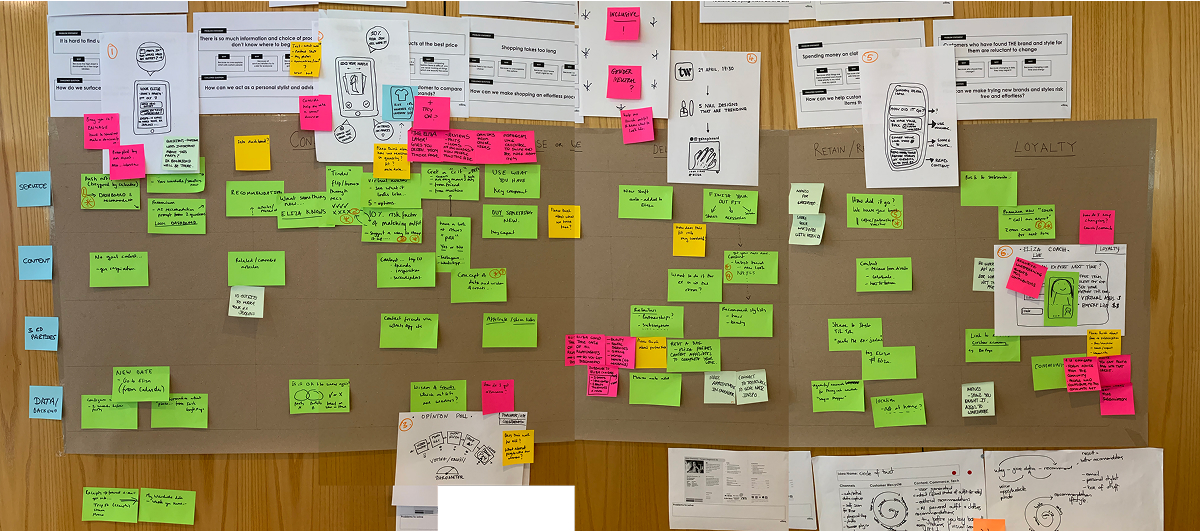
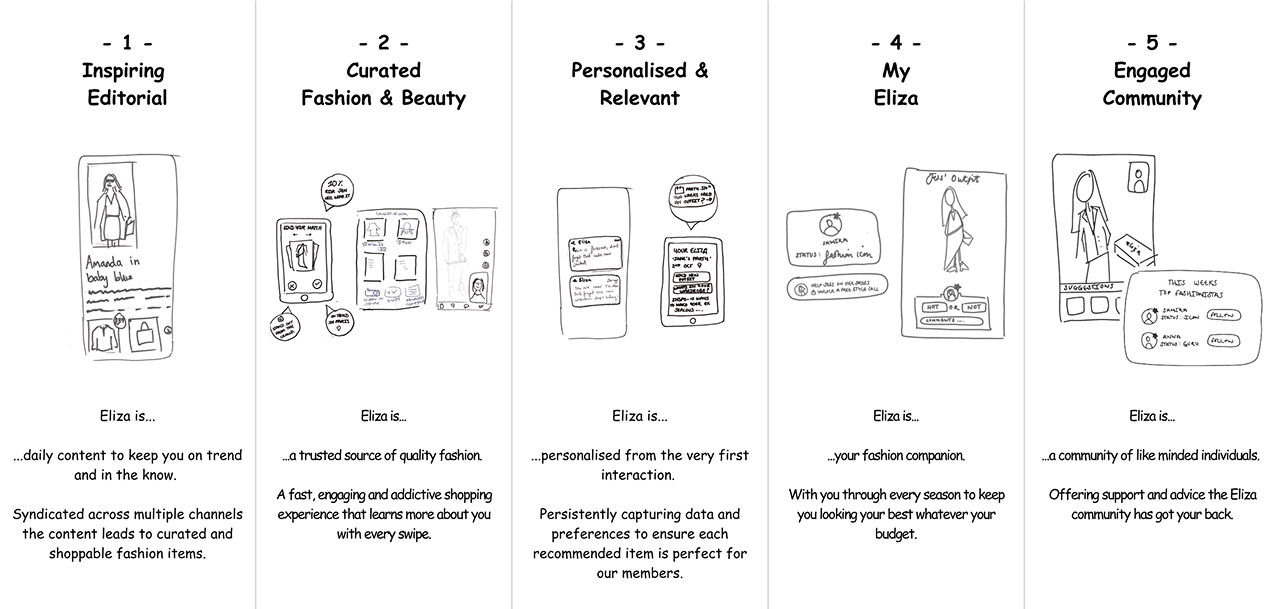
Impact:
This exercise clarified priorities and aligned cross-functional stakeholders around a shared vision. It also defined MVP success criteria, set scope boundaries, and identified areas for future scaling.
The customer journey directly informed wireframes, navigation flows, and content hierarchy—ensuring the design outputs were not only visually consistent but also strategically connected to real user behaviours.
Wireframes on Basic User flow (Full version)
Initially, I produced wireframes based on the full product vision, reflecting all proposed features and user journeys. This included both editorial content and interactive components envisioned for the eventual AI-powered app.
These wireframes served as a communication tool to show the team and stakeholders how users could navigate the product end-to-end.
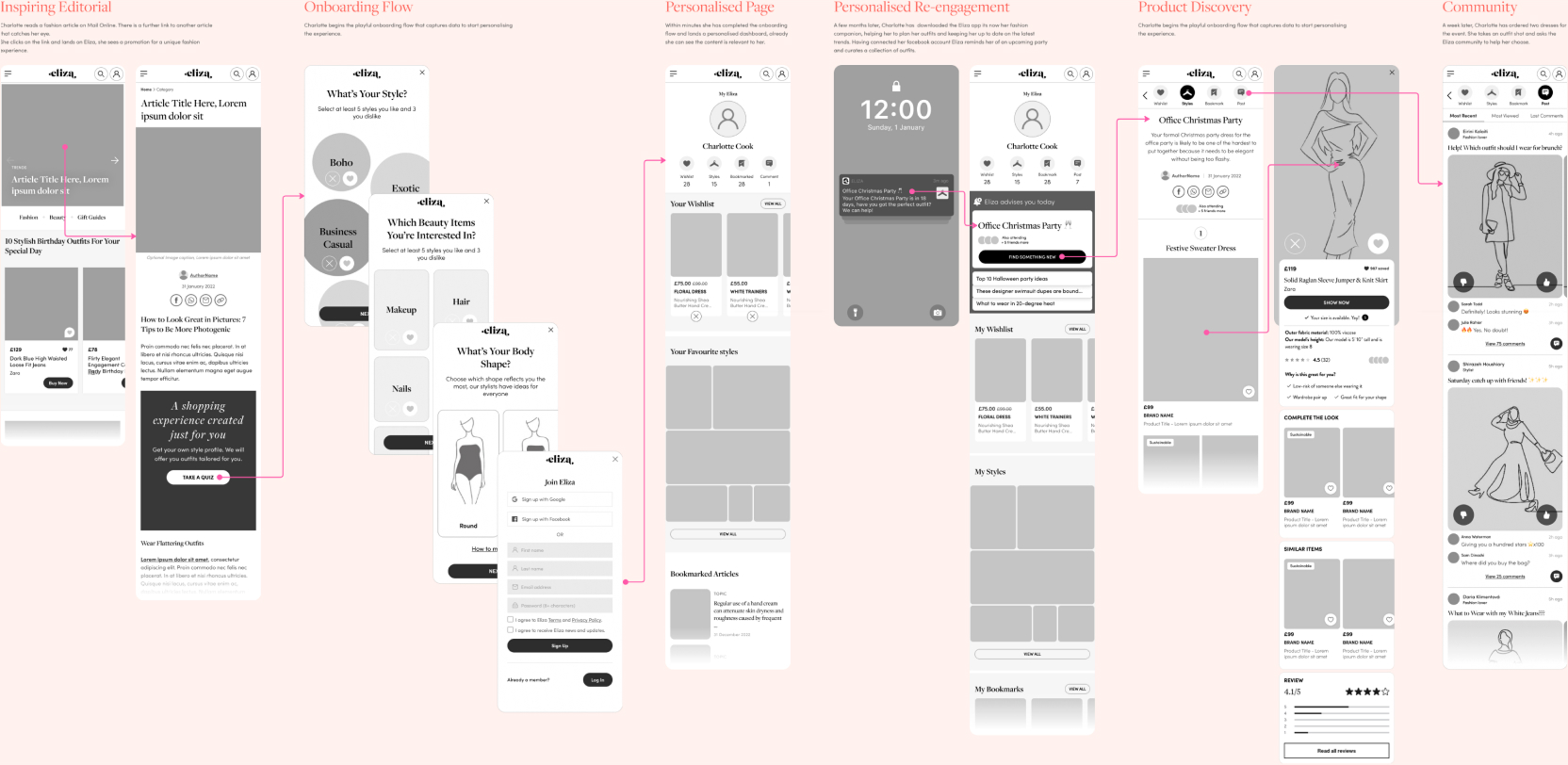
Key point:
After reviewing the wireframes, business decisions led to focusing on the MVP, limiting the scope to web magazine functionality. I updated the User Flow Diagrams to reflect both the full-feature vision and the scaled-down MVP, ensuring the team could visualise potential future expansion while keeping immediate development goals clear.
User flow diagram
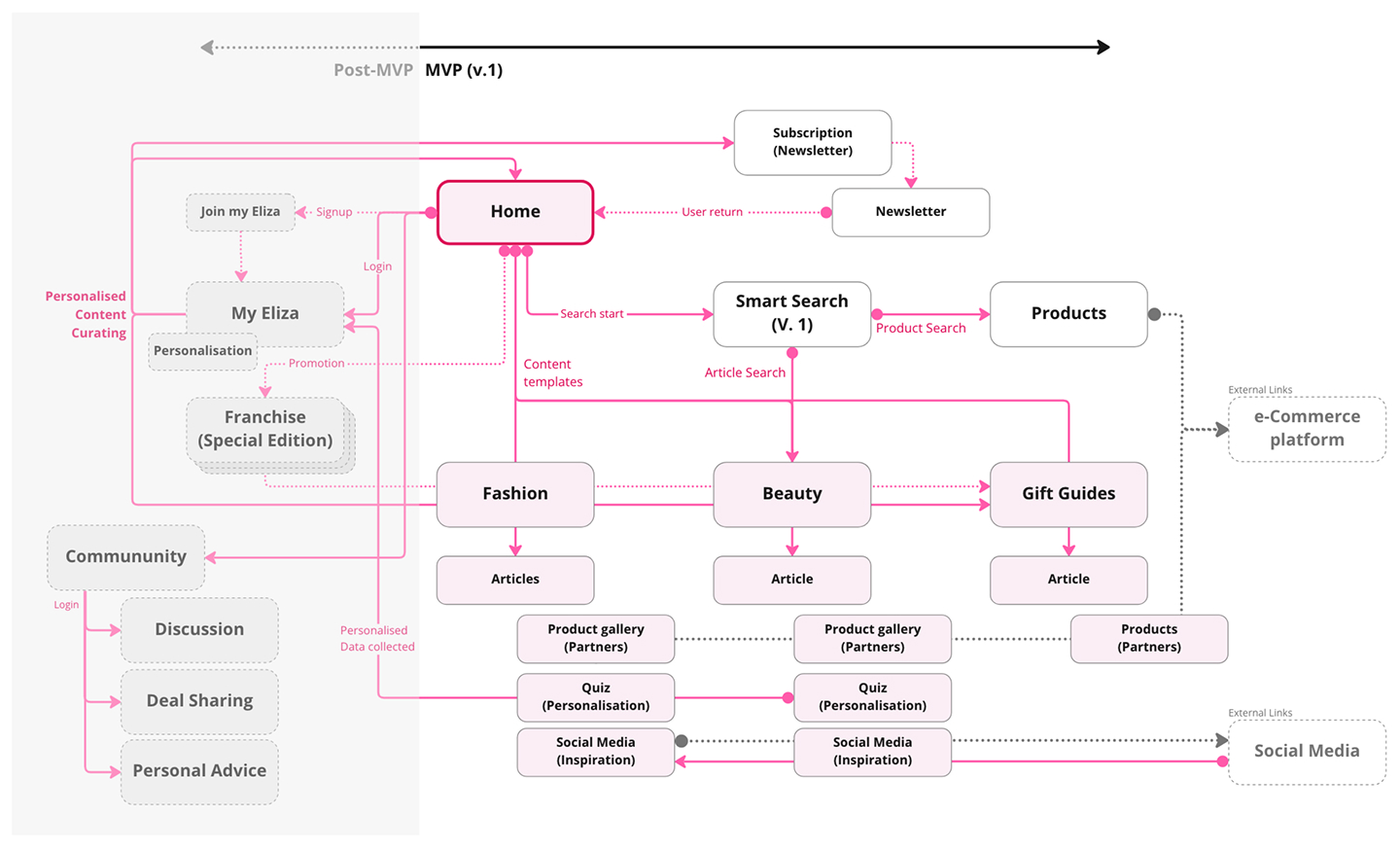
Wireframes & Initial Insights (MVP Version)
I shared my findings with the team and facilitated a workshop to refine the product’s user flow. Together, we established hypotheses about user behaviours and created user stories based on our research.
We agreed to develop an MVP to validate assumptions quickly. I then revised the wireframes to reflect a magazine-style web experience:
- Simplified user flow for editorial content.
- Removed advanced shopping/AI features for initial testing.
- Developed a basic interactive prototype in Figma.
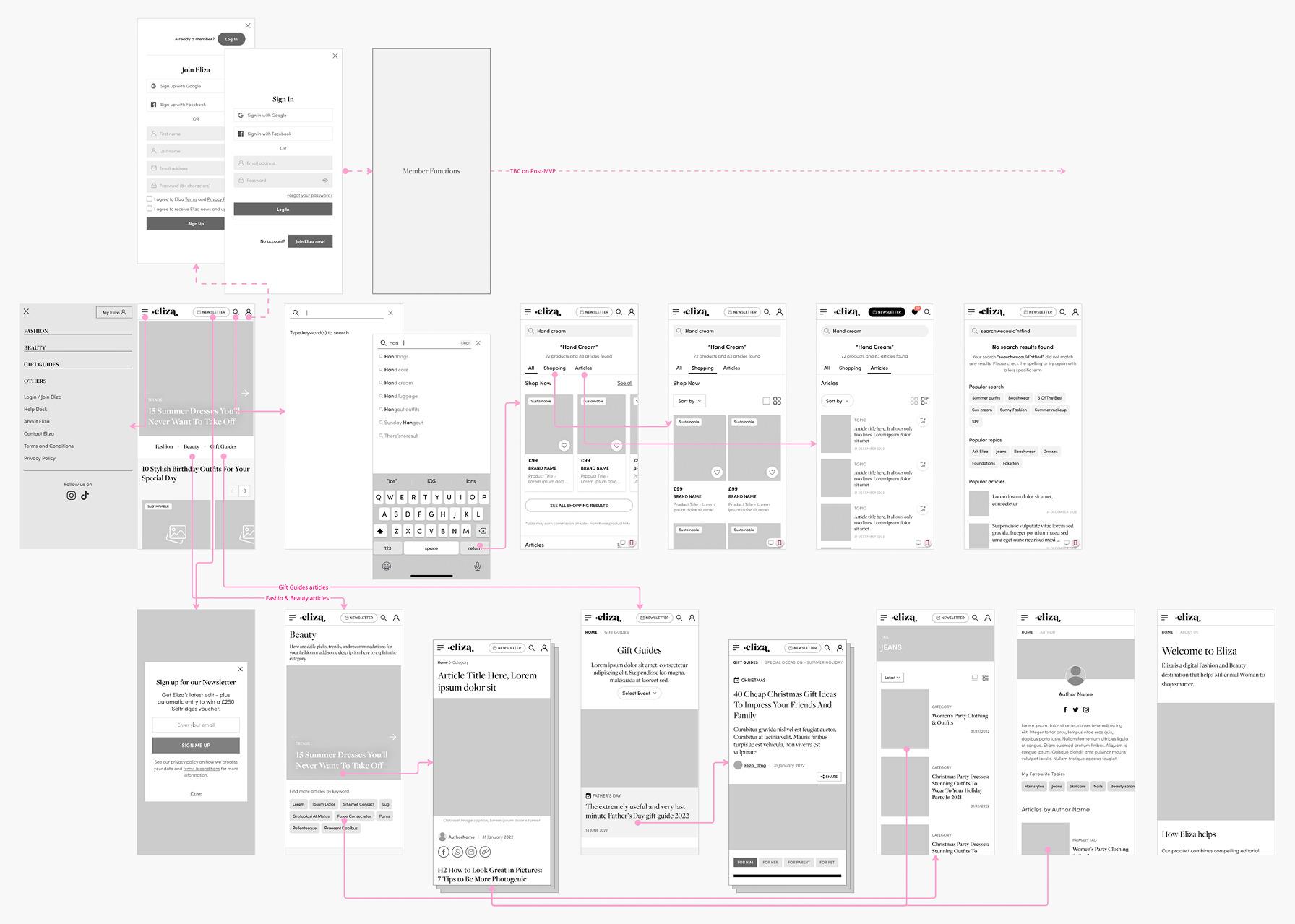
User testing and feedback
I conducted initial user testing to gather insights on usability and behaviour:
- Users easily navigated categories and articles; they recognised the search function without issue.
- Users were confused by the shopping function, assuming they could add products to a cart.
- Users valued author details and were more likely to share articles when social icons were visible compared to a generic share button.
Design for a Dedicated Mobile Website
Survey results confirmed that most of our target audience browsed primarily on mobile devices, so the initial release focused on a mobile-first website that captured Eliza’s brand identity.
Based on this approach, we planned to expand into a fully responsive site optimised for both mobile and desktop in the next phase.
My Deliverables
- Designed a mobile-first site (eliza.co.uk) reflecting Eliza’s inclusive and stylish brand tone.
- Built a scalable UI kit and component library, ensuring consistency across MVP and potential app extensions.
- Connected hi-fi designs to dynamic prototypes with custom animations in Figma, enabling realistic usability tests.
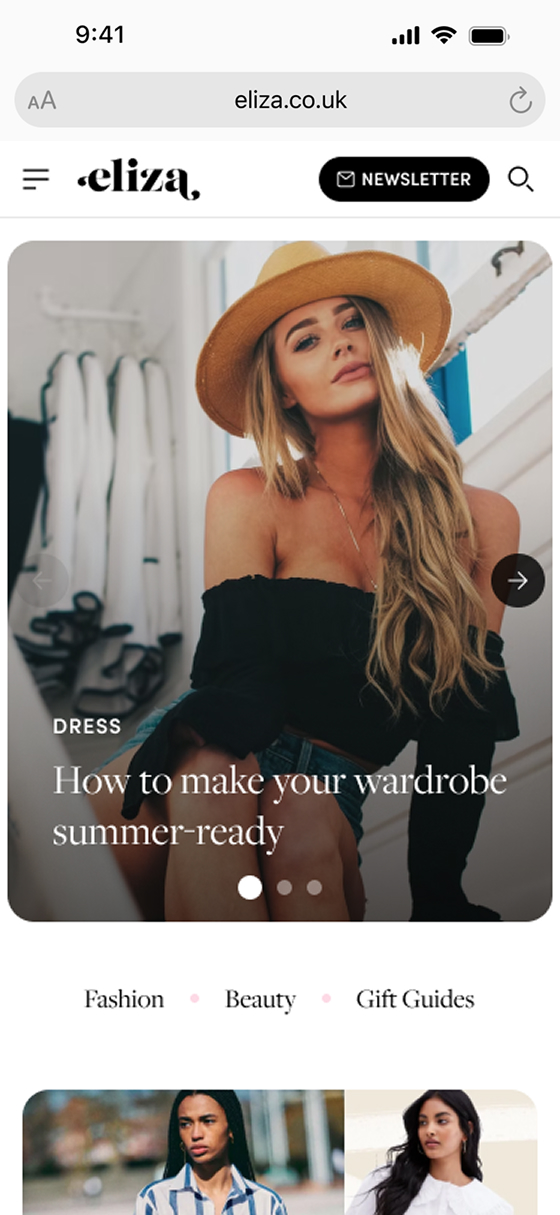
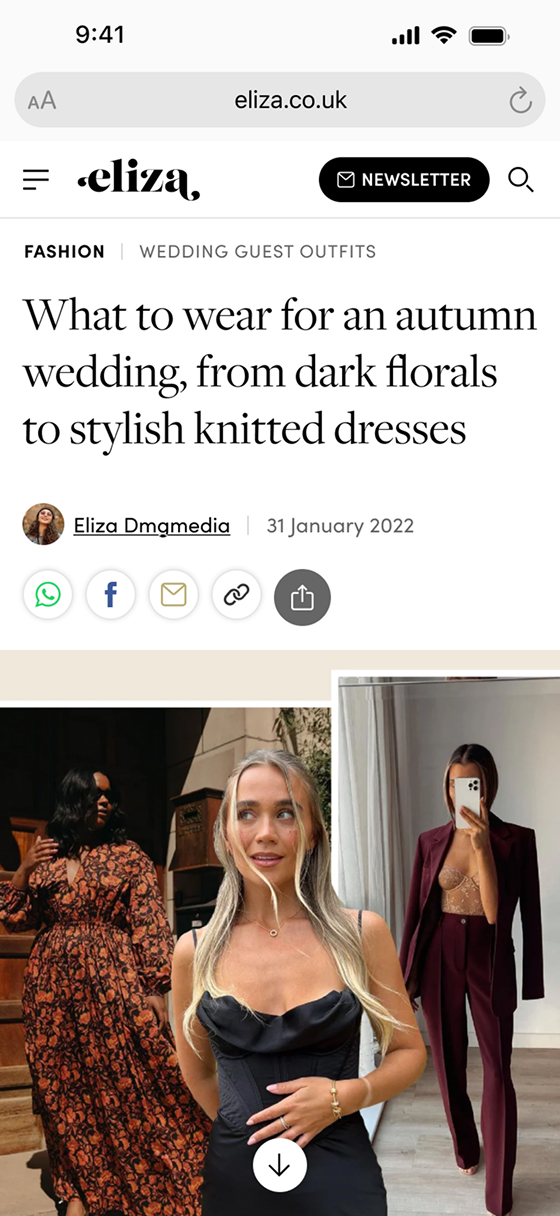
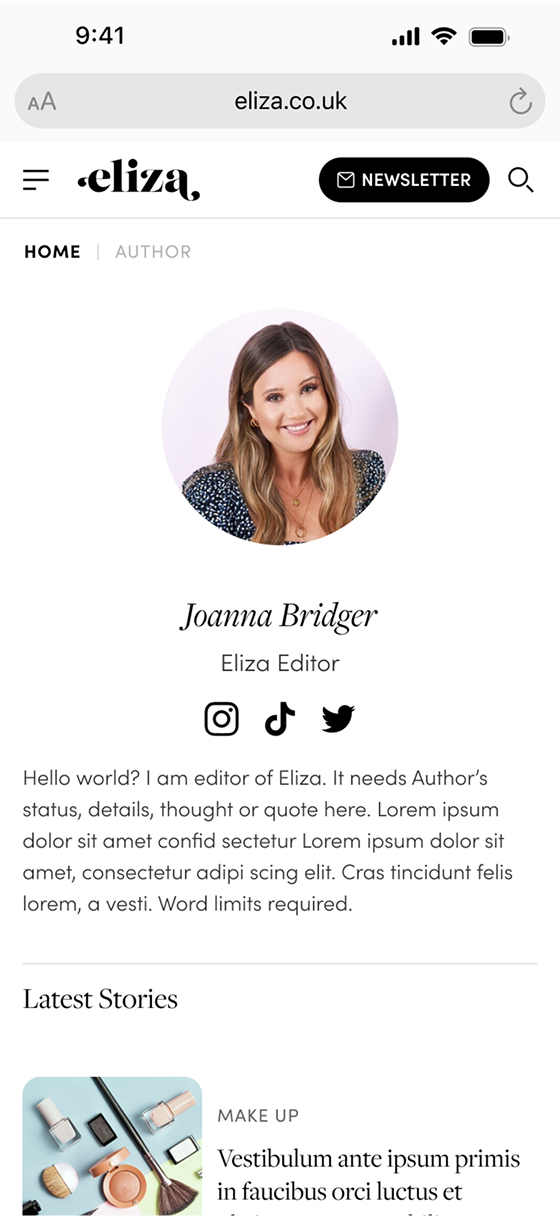
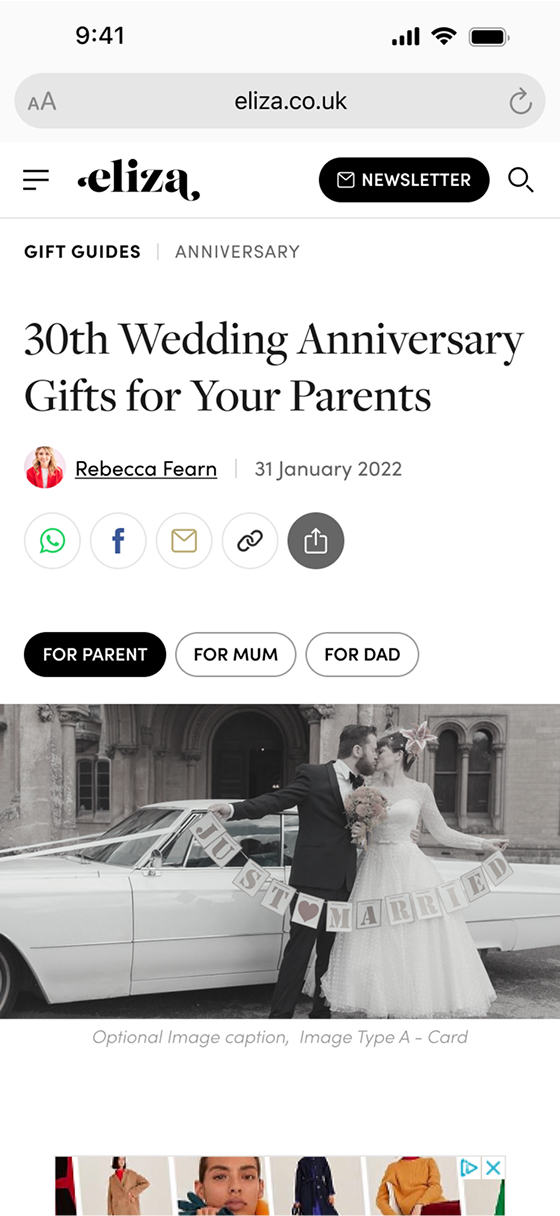
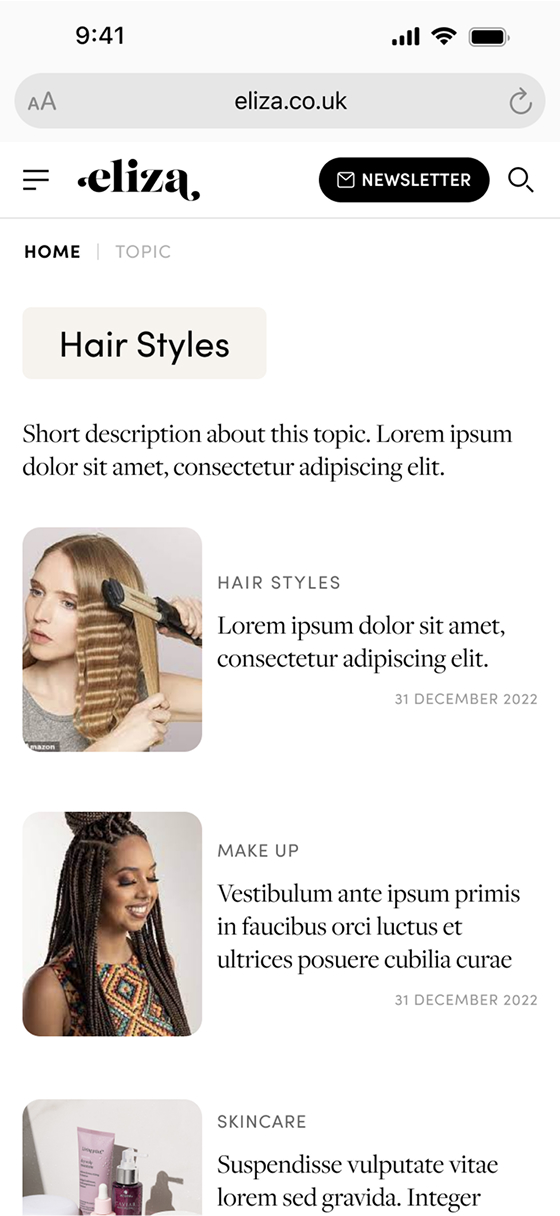





UI Kits for Eliza
The system became a cornerstone for cross-team collaboration, reducing design-to-dev friction and enabling faster iteration.
- Created a scalable UI kit to ensure consistency across web (MVP) and potential app experiences.
- Designed reusable components reflecting Eliza’s brand tone and interaction patterns.
- Considered accessibility, responsiveness, and micro-interactions to enhance usability.
- Structured for efficient collaboration between designers and developers.
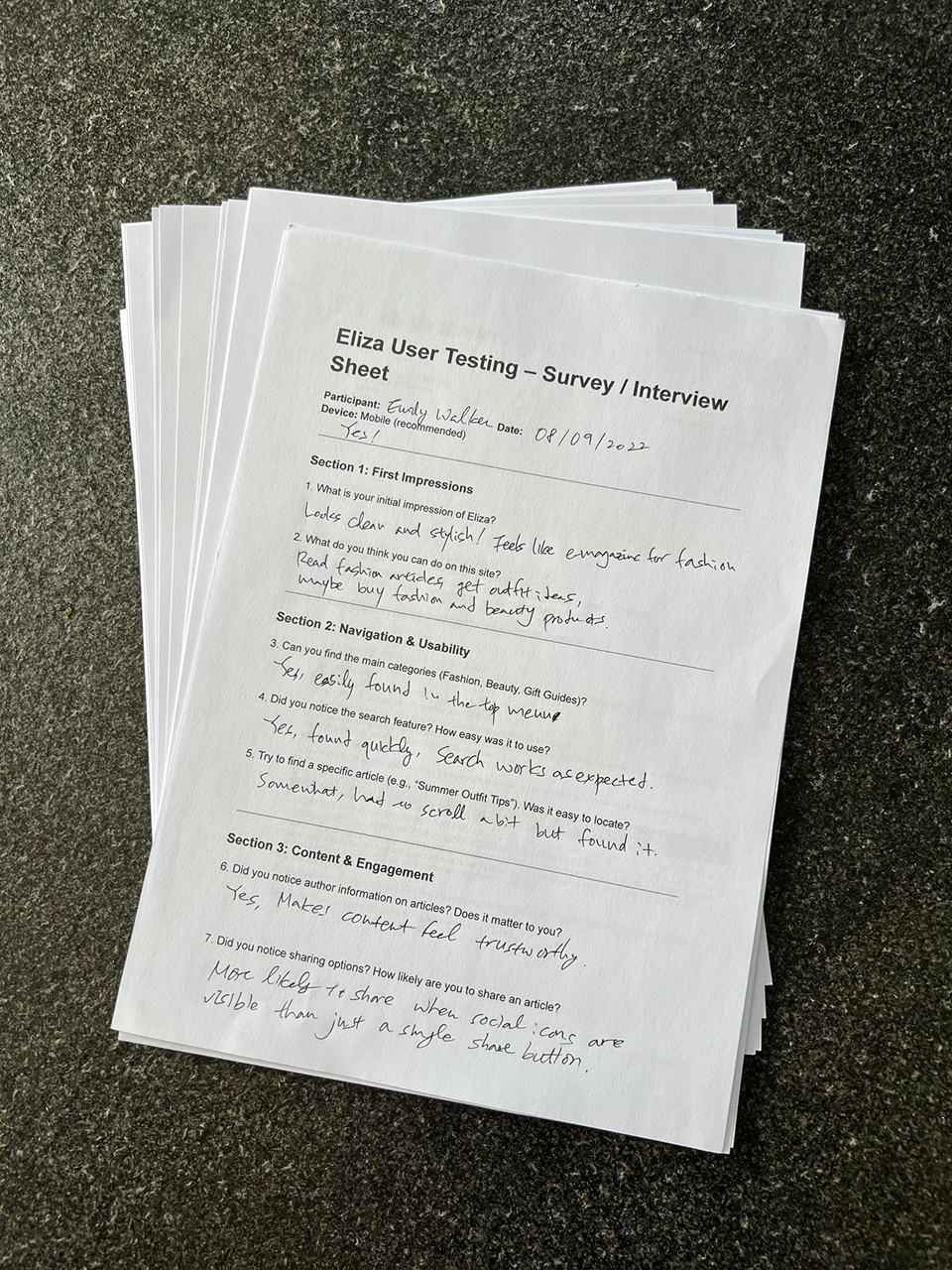
Validation
I conducted user interviews, usability testing, and surveys alongside the product owner to evaluate the MVP and ensure it delivered satisfying user experience. This research helped us confirm user goals, uncover pain points, and assess overall product efficiency.
The development team quickly built an MVP with key features, which we tested with seven participants. These sessions provided actionable insights, validating design decisions and guiding refinements for the next iteration.
Key Findings
- 5 out of 7 participants understood the purpose of the product, but some were confused by e-commerce functions within articles and hesitated to connect to external sites.
- Half of the participants requested a feature to save favourite products—planned for development with membership functions (post-MVP).
- Users preferred clear author attribution and were more likely to share articles when social icons were present.
Development & Launching
As Eliza was a pilot project with a small team, I participated directly in front-end development, collaborating with 2 developers.
- Ensured the design matched development output.
- Made direct code contributions for UI components when needed.
- After launch, monitored early usage; site maintained MVP functionality while the team planned longer-term strategies for social platform engagement and potential future app features.
Project Outcome:
- Successfully launched a mobile-first editorial web MVP.
- Established a scalable design system and UI kit for future expansions.
- Delivered user-validated workflows and visual assets that could inform subsequent app development.
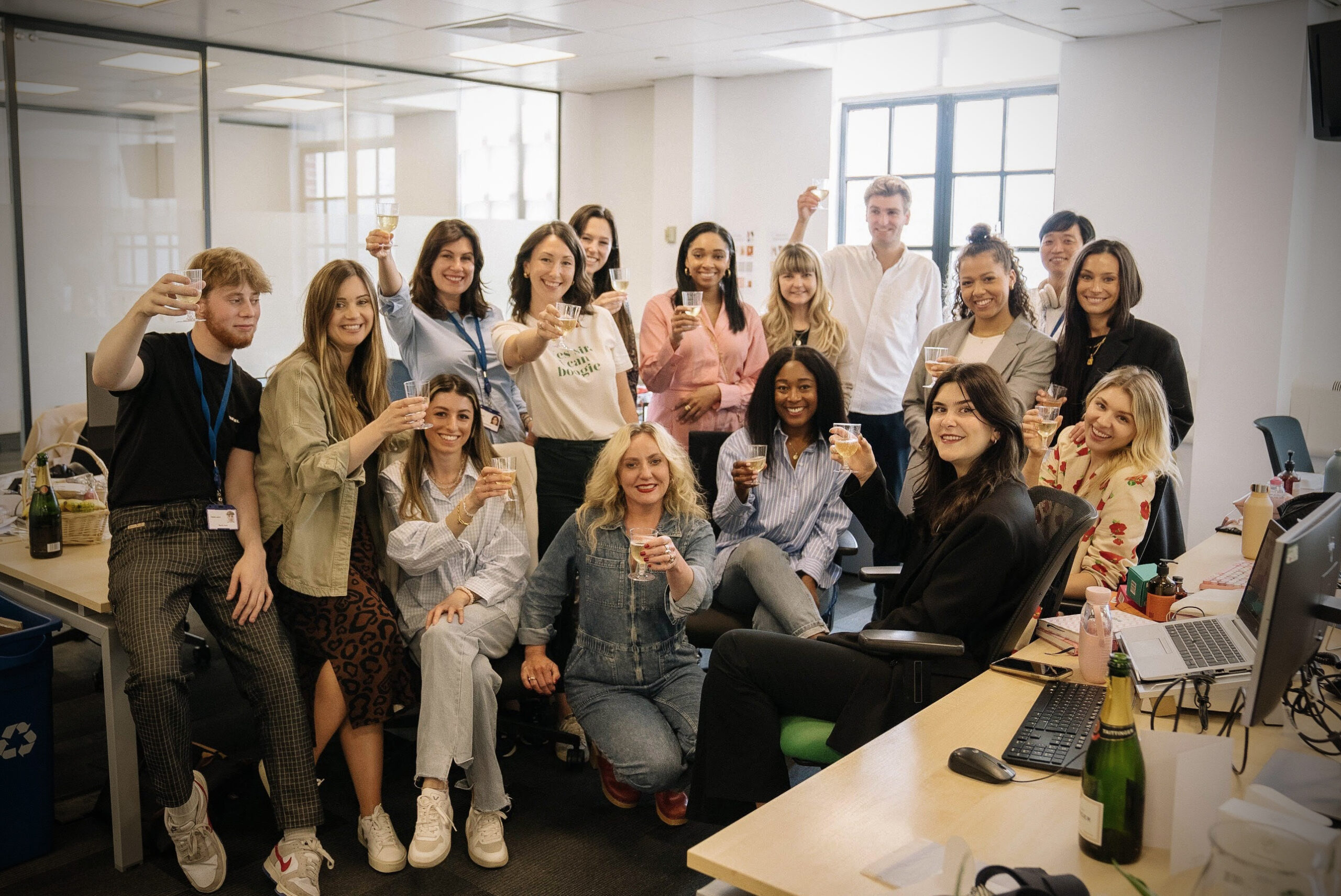
Retrospective
This is what I felt and what I learned
Leading Product Design
As the lead designer on the Eliza team, I often brought clarity when things were uncertain. I learned to guide the team, set priorities, and ensure every design decision moved in the same direction.
Design Systems as Strategy
Creating the design system wasn’t just about style—it was about laying the foundation for future product development. I focused on building immediately usable UI kits while also ensuring they could scale into a full version later. This work made the design process more efficient, and it meant that even if the team changed, others could continue without major friction.
User-Centred Validation
Conducting usability tests and surveys confirmed the value of validating assumptions early. This reinforced the importance of grounding design decisions in real user behaviours, and it shaped how we refined the MVP and planned future iterations.









